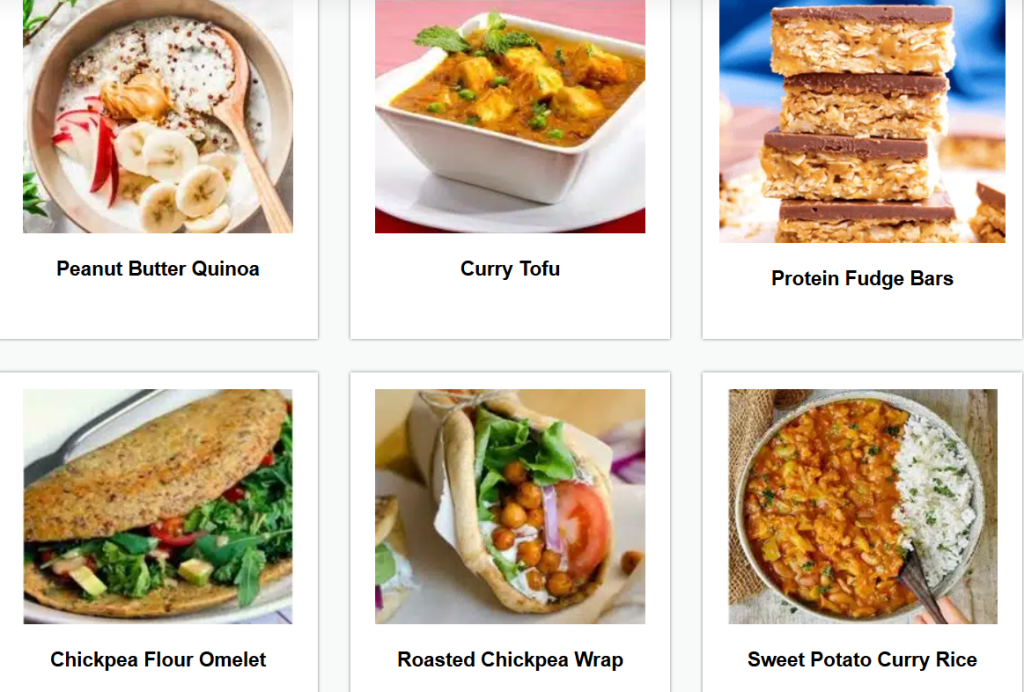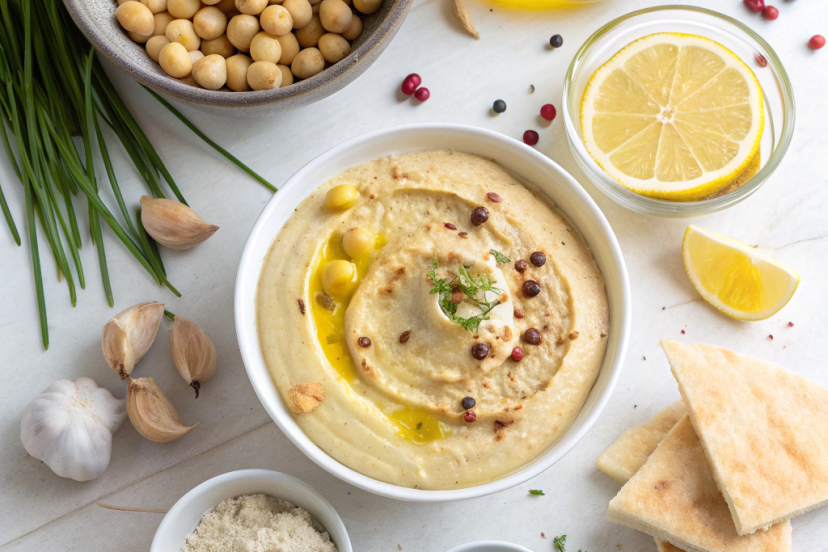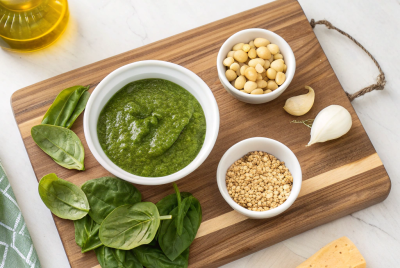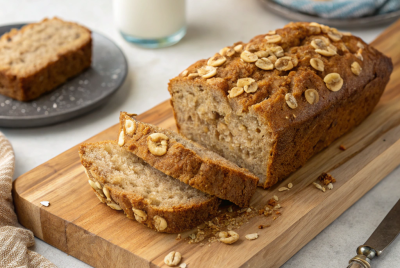Creamiest Hummus Recipe Without Tahini
This tahini-free hummus recipe delivers all the creamy, rich flavor you love without the expensive specialty ingredient. Perfect for when you’re out of tahini or want a lighter, more affordable version.
Why You Need to Try This Hummus Recipe Without Tahini
Have you ever craved homemade hummus but realized you’re out of tahini? Or maybe you’ve avoided making hummus altogether because tahini can be expensive and hard to find in some areas. This hummus recipe without tahini solves both problems while delivering surprisingly incredible results. I discovered this method when I was living in a small town with limited grocery options, and honestly, I now prefer it to traditional tahini-based versions. The texture is lighter and fluffier, the chickpea flavor shines through beautifully, and you can make it with ingredients you likely already have in your pantry.
What makes this tahini-free hummus truly special is how customizable and forgiving it is. Without tahini’s strong, nutty flavor dominating the mix, you can really taste the garlic, lemon, and herbs you add. Plus, it’s significantly more budget-friendly – a batch costs about 60% less than traditional hummus. The secret lies in using extra olive oil and a splash of the chickpea cooking liquid (aquafaba) to achieve that signature creamy texture. I’ve served this to countless friends and family members, and not one person has missed the tahini. In fact, many have asked for the recipe, claiming it’s the best hummus they’ve ever had.
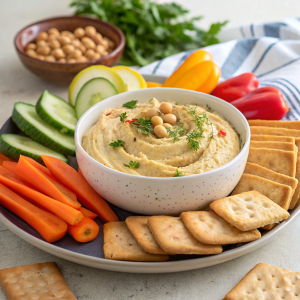
Hummus Recipe Without Tahini
Equipment
- Food processor or high-powered blender
- Small bowl for soaking (optional)
- Rubber spatula
- Serving bowl
- Storage containers
Ingredients
- 1 can 15 oz chickpeas/garbanzo beans, drained and rinsed (reserve 1/4 cup liquid)
- 3-4 tablespoons fresh lemon juice about 1 large lemon
- 1 small garlic clove minced
- 2-3 tablespoons extra-virgin olive oil plus more for serving
- 1/2 teaspoon ground cumin
- Salt to taste
- 2-3 tablespoons chickpea liquid aquafaba or water
- Dash of paprika for serving
- Fresh parsley chopped, for garnish
Instructions
Step 1: Prepare the Chickpeas (Optional but Recommended)
- For ultra-smooth hummus, remove the skins from the chickpeas. Place drained chickpeas in a bowl, cover with water, and gently rub them together. The skins will float to the surface. Skim them off and discard. This step takes 3-4 minutes but makes a noticeable difference in texture.
Step 2: Process the Base
- Add the lemon juice, garlic, and salt to your food processor. Process for 30 seconds until well combined. Scrape down the sides with a spatula.
Step 3: Add Chickpeas and Seasonings
- Add the chickpeas, cumin, and 2 tablespoons of olive oil. Process for 1-2 minutes until thick and creamy, scraping down sides as needed.
Step 4: Achieve Perfect Consistency
- With the processor running, slowly drizzle in the reserved chickpea liquid (aquafaba) until you reach your desired consistency. The hummus should be creamy but not runny. Process for 2-3 minutes for maximum smoothness.
Step 5: Taste and Adjust
- Taste and adjust seasoning. Add more lemon juice for brightness, salt for flavor, or garlic for punch. For thinner consistency, add more aquafaba 1 tablespoon at a time.
Step 6: Serve
- Transfer to a serving bowl, create a shallow well in the center, and drizzle with olive oil. Sprinkle with paprika and fresh parsley.
Notes
- Use room temperature ingredients for easier blending and smoother texture
- Don’t skip the aquafaba – it’s the secret to creamy texture without tahini
- Process longer than you think – 3-4 minutes of processing creates the silkiest hummus
- Add lemon juice first to help break down the garlic and create a smooth base
- Taste as you go – tahini-free hummus lets other flavors shine, so adjust accordingly
- Chill before serving – flavors meld beautifully after 30 minutes in the refrigerator
- Refrigerator: Store covered for up to 1 week
- Freezer: Freeze for up to 3 months (texture may change slightly upon thawing)
- Serving tip: Bring to room temperature and stir well before serving refrigerated hummus
Nutrition
Dietary Adaptations For Hummus Recipe Without Tahini
Gluten-Free ✓
This recipe is naturally gluten-free when served with appropriate accompaniments.
Vegan ✓
Completely plant-based and vegan-friendly.
Diabetic-Friendly ✓
Low in sugar and high in fiber. Pair with vegetables instead of crackers to keep carbs lower.
Keto Modification
Replace chickpeas with:
- 1 cup blanched cauliflower (cooked and cooled)
- 1/4 cup hemp hearts or sunflower seeds
- Follow same method, adding extra olive oil as needed
Low-Sodium
Omit added salt and use low-sodium chickpeas. Season with herbs and lemon juice.
Nut-Free ✓
Naturally nut-free, unlike traditional tahini-based recipes.
Serving Suggestions – What To Eat With Hummus
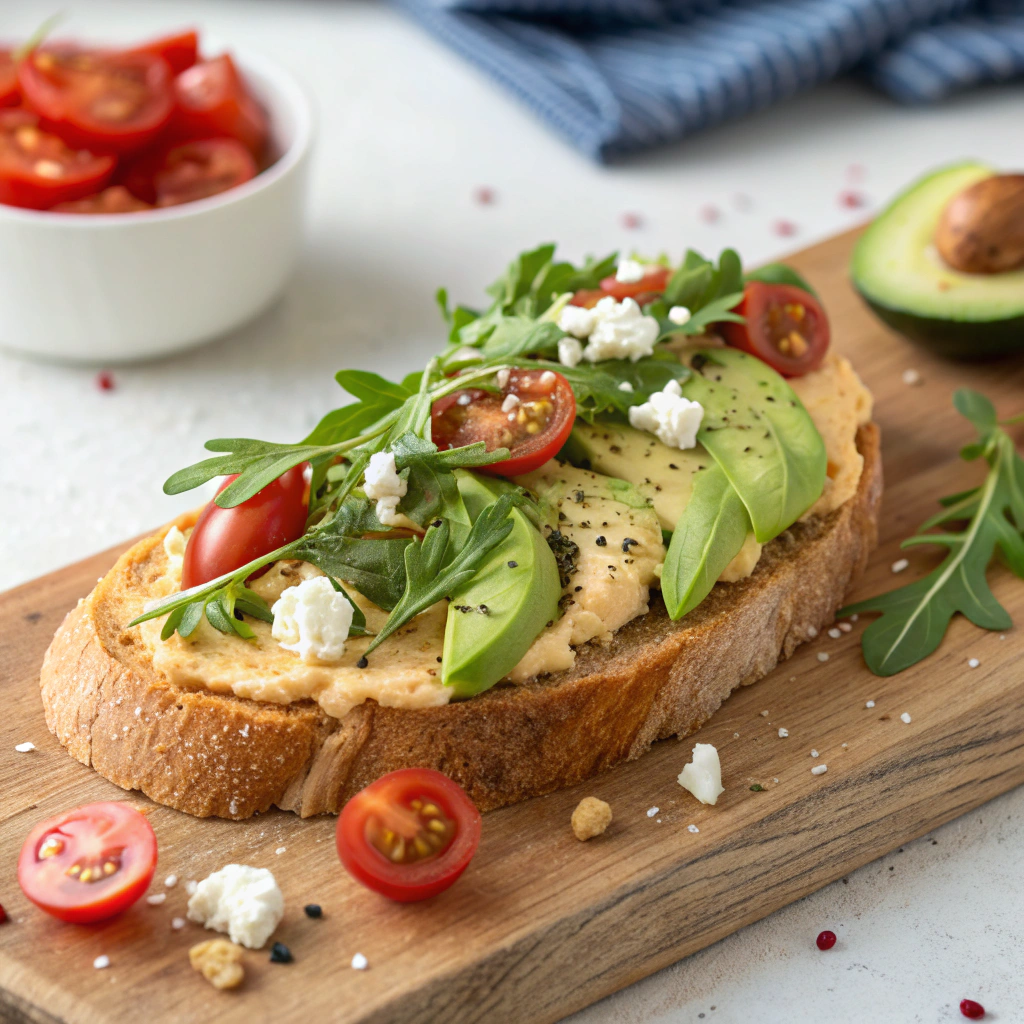
Classic Pairings:
- Fresh vegetables (carrots, cucumber, bell peppers)
- Warm pita bread or pita chips
- Crackers or pretzels
Creative Uses:
- Sandwich spread instead of mayo
- Base for Mediterranean grain bowls
- Dollop on roasted vegetables
- Thin with extra lemon juice for salad dressing
- Layer in wraps and pita pockets
- Spread on a toasted sourdough slice, garnished with avocado slices, tomato cherries, rocket salad, and feta cheese.
Flavor Variations:
- Roasted Red Pepper: Add 1/4 cup roasted red peppers
- Herb-Forward: Blend in fresh basil, cilantro, or dill
- Spicy: Add pinch of cayenne or jalapeño
- Smoky: Include 1/2 teaspoon smoked paprika
Frequently Asked Questions
1. Can I make this hummus recipe without tahini taste exactly like traditional hummus?
While it won’t taste identical to tahini-based hummus, this homemade hummus without tahini recipe creates an equally delicious and creamy result. The chickpea flavor is more prominent, and the texture is actually lighter and fluffier. Many people prefer this version once they try it!
2. What can I substitute for the chickpea liquid if I used canned chickpeas?
If you’ve already discarded the chickpea liquid, you can use plain water, vegetable broth, or even a bit of ice water. Start with 2 tablespoons and add more as needed. The aquafaba (chickpea liquid) works best because it contains natural starches that help create creaminess.
3. How long does homemade hummus without tahini last in the refrigerator?
This tahini-free hummus stays fresh for up to one week when stored in an airtight container in the refrigerator. The flavors actually improve after the first day as they have time to meld together. Always use a clean spoon when serving to prevent contamination.
4. Can I use dried chickpeas instead of canned for this recipe?
For sure! Cook 1/2 cup dried chickpeas until very tender (this may take 60-90 minutes). Save the cooking liquid – it makes excellent aquafaba for achieving the perfect creamy texture. Freshly cooked chickpeas often result in even smoother hummus.
5. Why is my hummus without tahini not as smooth as I’d like?
The key to silky smooth tahini-free hummus is processing time and liquid ratio. Process for at least 3-4 minutes, scraping down sides frequently. If it’s still grainy, add aquafaba 1 tablespoon at a time and continue processing. Removing chickpea skins before blending also helps achieve restaurant-quality smoothness.
6. Can you freeze hummus without tahini?
Yes, you can freeze this tahini-free hummus for up to 3 months! For best results, transfer it to an airtight, freezer-safe container, leaving about half an inch of space at the top for expansion. You can also freeze individual portions in ice cube trays, then transfer the cubes to a freezer bag for easy single servings. To thaw, move the hummus to the refrigerator overnight. Once thawed, you may notice some separation – simply stir vigorously or give it a quick pulse in the food processor with a tablespoon of olive oil or fresh lemon juice to restore the creamy texture. While the consistency may be slightly different than fresh hummus, the flavor remains excellent, making freezing a great option for meal prep or preserving leftovers.
This hummus recipe without tahini proves that sometimes the simplest ingredients create the most satisfying results. Save this recipe for your next gathering – your guests will be asking for the secret ingredient (spoiler: there isn’t one, just good technique and quality ingredients)!
See also:
